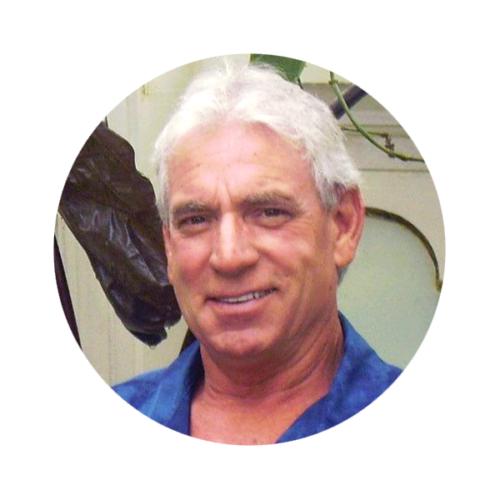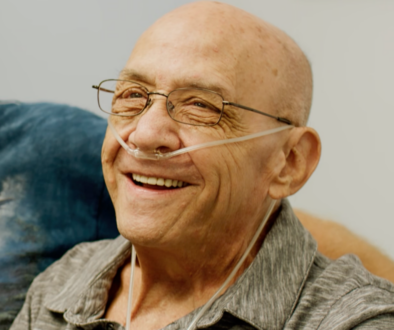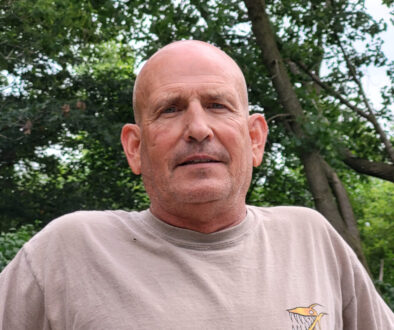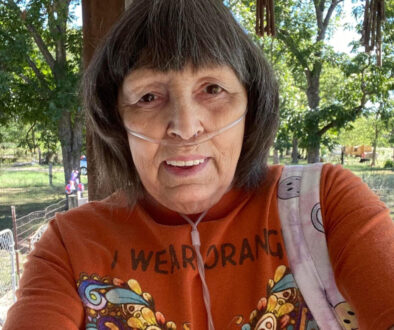
Jeffrey’s Story
“The valves have given me my life back. They’ve given me hope and took me out of my depression. I’m not going 120 mph anymore, but I’m doing a comfortable 60.”
Procedure Details:
Age at Treatment: 65
Date of Procedure: April 2021
Hospital: Stanford Health Care, Interventional Pulmonology
Hometown: Stanford, CA
Jeffrey’s Story
“The valves have given me my life back. They’ve given me hope and took me out of my depression. I’m not going 120 mph anymore, but I’m doing a comfortable 60.”

Procedure Details:
Age at Treatment: 65
Date of Procedure: April 2021
Hospital: Stanford Health Care, Interventional Pulmonology
Hometown: Stanford, CA
Life Before Zephyr® Valves:
In the early 2000s doctors would say my lungs looked “iffy,” but I wasn’t feeling the impact on my daily life — so I just kept going. I wanted to hit the road and make money. I am an electrician by trade and I’ve worked in a lot of steel mills, nuclear power plants and shipyards. I even painted cars. Suffice it to say, I’ve been around a lot of chemicals throughout my life.
I was always one of those guys that was go-go-go. Seven days a week, in all kinds of weather. I thought of myself as a machine. Then one day, around 2008, it really hit me that my breathing was declining. Even after I had quit smoking I continued to struggle. By 2018, I had to call it quits from my job and went on disability.
Aside from not being able to work, even the basic things at home became challenging. I’d get out of breath, and I really didn’t want to lug that oxygen tank around. I worked in my gardens but eventually gave that up too. I just didn’t have the giddy-up anymore. I mostly had to sit around and I did get very depressed.
In Spring of 2019, I found out about pulmonary rehab classes. I met a lot of great therapists and learned a lot of things I’d been doing wrong. One very important thing they taught me was how to breathe properly so I’d get the most out of my lungs. It was my respiratory therapist who told me about Zephyr Valves. Because of my insurance, I had to see doctors within my healthcare system. The doctor there only suggested I do lung volume reduction surgery (LVRS) but I wasn’t comfortable with that because that is a very big surgery to me.
I really believed the valves would be a good option for me. I had done all the research and listened to the testimonials. Finally, I decided to switch to a completely different insurance company so I could go through the workup process to see if I was a candidate for valves at Stanford. Dr. Kevin Duong at Stanford ordered all the workup tests to see if I qualified and I was extremely excited that I did.
– Jeffrey

Life After Zephyr Valves:
The procedure went great. I was in on Monday and out on Thursday with no complications. I had three valves placed in my upper right lobe which was holding 1.75 liters of trapped air. Now that the trapped air is gone, I don’t have that pressure on my stomach anymore. My diaphragm works and I can move again! I still practice my breathing exercises and I recommend pulmonary rehab to everyone. I believe it really makes a big difference for me both before and after getting my valves.
Before valves, I had to give up everything I knew — my job, hobbies. And while I am not back to go-go-go, I am back out in the world. I have a 40 ft. pool in my yard but I don’t have time to use it now because I’m too busy getting the things done that I couldn’t do before the valves. I just re-did my kitchen and finished up putting down some red brick.
Honestly, the valves have given me my life back. They’ve given me hope and took me out of my depression. All my friends say, “You look a lot better. You’ve got your color back.” I’m not going 120 mph anymore, but I’m doing a comfortable 60.
Results from case studies are not necessarily predictive of results in other cases. Results in other cases may vary.
GLO-EN-1216-v1
What is the Zephyr Valve procedure?
The Zephyr Valve has been shown to help patients breathe easier, do more, and enjoy life.1
Despite taking the best available medications, many patients with severe COPD/emphysema suffer from hyperinflation of their lungs where air becomes trapped in the lungs, preventing fresh air from entering and thereby causing severe shortness of breath.
The Zephyr Valves reduce lung hyperinflation by allowing trapped air to escape and preventing new air from entering that diseased lobe. This allows the healthier parts of the lung to function better and results in patients being able to breathe more easily and experience less shortness of breath.
The valves are placed via bronchoscopy, with no incision or cutting, so these benefits are achieved without the risks of traditional surgical options. The procedure is usually complete in under an hour.
Complications of the Zephyr Endobronchial Valve treatment can include but are not limited to pneumothorax, worsening of COPD symptoms, hemoptysis, pneumonia, dyspnea and, in rare cases, death.
-
In the early 2000s doctors would say my lungs looked “iffy,” but I wasn’t feeling the impact on my daily life — so I just kept going. I wanted to hit the road and make money. I am an electrician by trade and I’ve worked in a lot of steel mills, nuclear power plants, and shipyards. I even painted cars. Suffice it to say, I’ve been around a lot of chemicals throughout my life.
I was always one of those guys that was go-go-go. Seven days a week, in all kinds of weather. I thought of myself as a machine. Then one day, around 2008, it really hit me that my breathing was declining. Even after I had quit smoking I continued to struggle. By 2018, I had to call it quits from my job and went on disability.
Aside from not being able to work, even the basic things at home became challenging. I’d get out of breath, and I really didn’t want to lug that oxygen tank around. I worked in my gardens but eventually gave that up too. I just didn’t have the giddy-up anymore. I mostly had to sit around and I did get very depressed.
In Spring of 2019, I found out about pulmonary rehab classes. I met a lot of great therapists and learned a lot of things I’d been doing wrong. One very important thing they taught me was how to breathe properly so I’d get the most out of my lungs. It was my respiratory therapist who told me about Zephyr Valves. Because of my insurance, I had to see doctors within my healthcare system. The doctor there only suggested I do lung volume reduction surgery (LVRS) but I wasn’t comfortable with that because that is a very big surgery to me.
I really believed the valves would be a good option for me. I had done all the research and listened to the testimonials. Finally, I decided to switch to a completely different insurance company so I could go through the workup process to see if I was a candidate for valves at Stanford. Dr. Kevin Duong at Stanford ordered all the workup tests to see if I qualified and I was extremely excited that I did.
-
The procedure went great. I was in on Monday and out on Thursday with no complications. I had three valves placed in my upper right lobe which was holding 1.75 liters of trapped air. Now that the trapped air is gone, I don’t have that pressure on my stomach anymore. My diaphragm works and I can move again! I still practice my breathing exercises and I recommend pulmonary rehab to everyone. I believe it really makes a big difference for me both before and after getting my valves.
Before valves, I had to give up everything I knew — my job, hobbies. And while I am not back to go-go-go, I am back out in the world. I have a 40 ft. pool in my yard but I don’t have time to use it now because I’m too busy getting the things done that I couldn’t do before the valves. I just re-did my kitchen and finished up putting down some red brick.
Honestly, the valves have given me my life back. They’ve given me hope and took me out of my depression. All my friends say, “You look a lot better. You’ve got your color back.” I’m not going 120 mph anymore, but I’m doing a comfortable 60.
-
The Zephyr Valve has been shown to help patients breathe easier, do more, and enjoy life.1
Despite taking the best available medications, many patients with severe COPD/emphysema suffer from hyperinflation of their lungs where air becomes trapped in the lungs, preventing fresh air from entering and thereby causing severe shortness of breath.
The Zephyr Valves reduce lung hyperinflation by allowing trapped air to escape and preventing new air from entering that diseased lobe. This allows the healthier parts of the lung to function better and results in patients being able to breathe more easily and experience less shortness of breath.
The valves are placed via bronchoscopy, with no incision or cutting, so these benefits are achieved without the risks of traditional surgical options. The procedure is usually complete in under an hour.
Results from case studies are not necessarily predictive of results in other cases. Results in other cases may vary.
– Jeffrey





